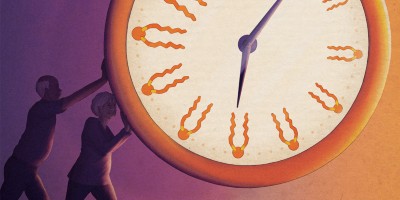By using multimodal MRI in aging humans, we found that noradrenergic brain regions are associated with episodic memory impairment, whereas dopaminergic areas are implicated in working memory impairment. Unravelling the role of changes in these neurotransmitter systems in age-related memory loss contributes to our understanding of the development of neurodegenerative diseases.

References
Scheltens, P. et al. Alzheimer’s disease. Lancet 397, 1577–1590 (2021). This paper summarizes key developments in the AD field, including prevalence estimates.
Braak, H., Thal, D. R. & Ghebremedhin, E. & Del Tredici, K. Stages of the pathologic process in Alzheimer disease: age categories from 1 to 100 years. J. Neuropathol. Exp. Neurol. 70, 960–969 (2011). This paper demonstrates that subcortical neurotransmitter nuclei accumulate AD-related abnormal tau early in life.
Mather, M. & Harley, C. W. The locus coeruleus: essential for maintaining cognitive function and the aging brain.Trends Cogn. Sci. 20, 214–226 (2016). A review describing how late-life noradrenergic changes are linked to cognitive decline.
Li, S.-C., Lindenberger, U. & Sikström, S. Aging cognition: from neuromodulation to representation. Trends Cogn. Sci. 5, 479–486 (2001). This opinion presents a computational model relating late-life dopaminergic changes to cognitive decline.
Betts, M. J. et al. Locus coeruleus imaging as a biomarker for noradrenergic dysfunction in neurodegenerative diseases. Brain 142, 2558–2571 (2019). This consensus statement describes in vivo imaging techniques for neurotransmitter nuclei.
Jacobs, H. I. L. et al. In vivo and neuropathology data support locus coeruleus integrity as indicator of Alzheimer’s disease pathology and cognitive decline. Sci. Transl. Med. 13, eabj2511 (2021). This paper presents in vivo and post-mortem data showing associations between noradrenergic integrity and AD markers.
Additional information
Publisher’s note Springer Nature remains neutral with regard to jurisdictional claims in published maps and institutional affiliations.
This is a summary of: Dahl, M. J. et al. The integrity of dopaminergic and noradrenergic brain regions is associated with different aspects of late-life memory performance. Nat. Aging https://doi.org/10.1038/s43587-023-00469-z (2023).
Rights and permissions
About this article
Cite this article
Dopaminergic and noradrenergic nuclei relate to different memory types in older adults. Nat Aging 3, 1051–1052 (2023). https://doi.org/10.1038/s43587-023-00497-9
Published:
Issue Date:
DOI: https://doi.org/10.1038/s43587-023-00497-9
- Springer Nature America, Inc.


